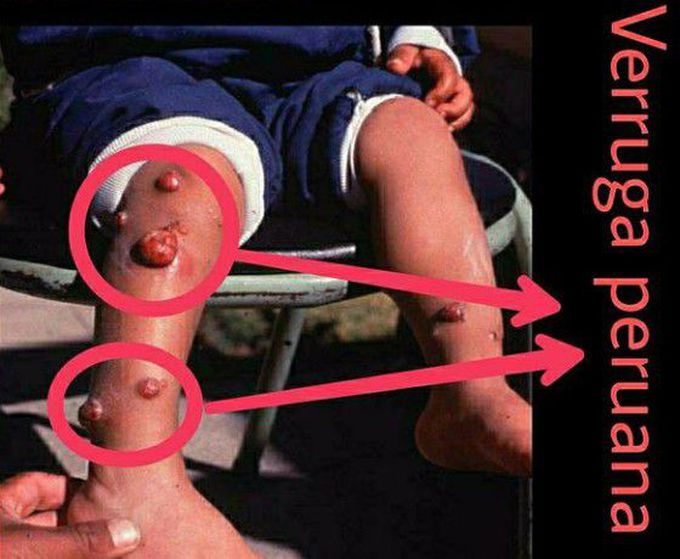


CARRIONS DISEASE
This patient with a history of hemolytic fever (oroya fever) and these characteristics skin lesions called veruga peruvana suggests the diagnosis of Carrions disease. ✅It occurs due to Infections with Bartonella bacilliformis ✅In the first phase of infection, the pathogen causes a hemolytic fever (“Oroya fever”) with case-fatality rates as high as ~90% in untreated patients, followed by a chronical phase resulting in angiogenic skin lesions (“verruga peruana”). ⏩Humans are the only known reservoir for this old disease and therefore no animal infection model is available. ⏩An infection with B. bacilliformis can result in a variety of different clinical manifestations such as severe illness, mild or asymptomatic illness or chronic asymptomatic bacteremia. ☑️Bartonella bacilliformis is transmitted to humans by female phlebotomine sand flies (Lutzomyia spp.) ✅If Oroya fever is survived, the chronic verruga peruana phase can occur impressing as blood-filled nodular hemangioma-like lesions in the skin. ⏩Streptomycin was the treatment of choice for the treatment of the chronic phase of Carrion's disease in earlier days but now azithromycin, chloramphenicol and rifampin are also tried with successful results. By: https://www.instagram.com/p/Cb930oThDo4/?igshid=YmMyMTA2M2Y=

